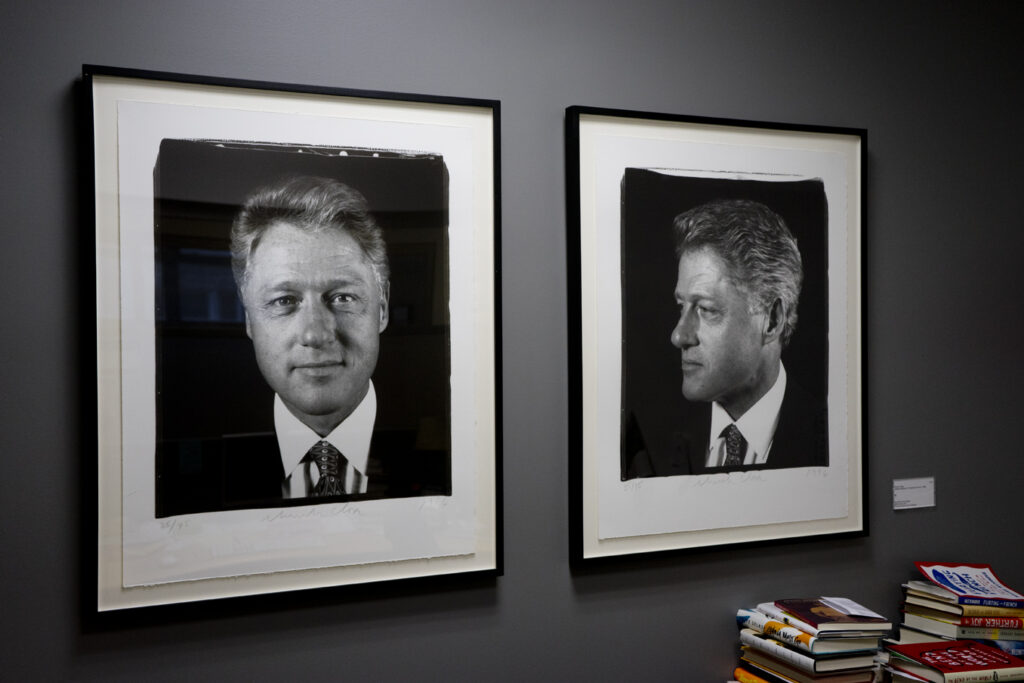
One of my favorite and most radical professors, John Reed, currently shares an office with two large, milky, black and white portraits of our 42nd president, William Jefferson Clinton. John dislikes them, even though they are by a famous artist, Chuck Close. The portraits have been there since before he arrived and could probably be moved, if he asked; instead, he has simply aligned his desk so that he faces the other way, just as the office’s previous occupant did. Perhaps the diptych is located in the offices of the writing program because our work is meant to expose the politics of the human interior, but when I encounter Bill Clinton’s large moony face in my professor’s office, it reminds me why I think many people avoid the subject of politics entirely.
Clinton was a master of using rhetoric to disguise the horror in his actions. Since many students in NSPE are in our late twenties/early thirties, and most New School students are even younger, we don’t necessarily remember in detail the exact nightmare that Clinton’s reign enacted upon leftist progressives in American government. We remember him playing the sax and not inhaling, instead of massacring social programs. But Clinton—not George W. Bush, as the current Democratic leadership would have you believe—is the main reason millennials and the rest of the country are in such deep dookie right now. If you don’t believe me, read Adolph Reed Jr., the Columbia political science scholar, and he’ll put you right.
Clinton was much more aligned to the needs and desires of Wall Street than any former president, whether elephant or donkey. He bent sharply to the right, setting a precedent for Democrats to be less progressive. Even in these portraits, where Billy-Boy’s mug is blown up triple-sized and in duplicate, he’s pushing a face of honesty where there is none. The ragged corners of the unframed negative are “exposed” and Clinton’s mouth is relaxed, almost smiling. In one portrait he faces forward, but it is the other that is more politically telling: Clinton is looking to HIS right, but to OUR left. I can think of no better visual metaphor for the downfall of American progressivism in the hands of those who were supposed to lead.
The fictions that Clinton spun affected my entire generation, and others. I’m sure some of the students here in the writing program wish that their own work could have as long-standing an effect. Writing is inherently political—I can’t think of a single book that could be cast as having no political content—and we go forth with that task in our hearts. Writing is also always personal, and emotional, which is something that Bill Clinton might have tried to be but never truly achieved. When seeing his face, I am reminded that the power of fiction can blow both ways: that it can harm just as easily as it can help.
Why are left-wing radical politics often considered more “controversial” than those on the right?
What are the fictions created by a work of visual art and can they have power?
Should our art collection have a responsibility towards progressive politics?
Ari Spool
Student, The New School for Public Engagement